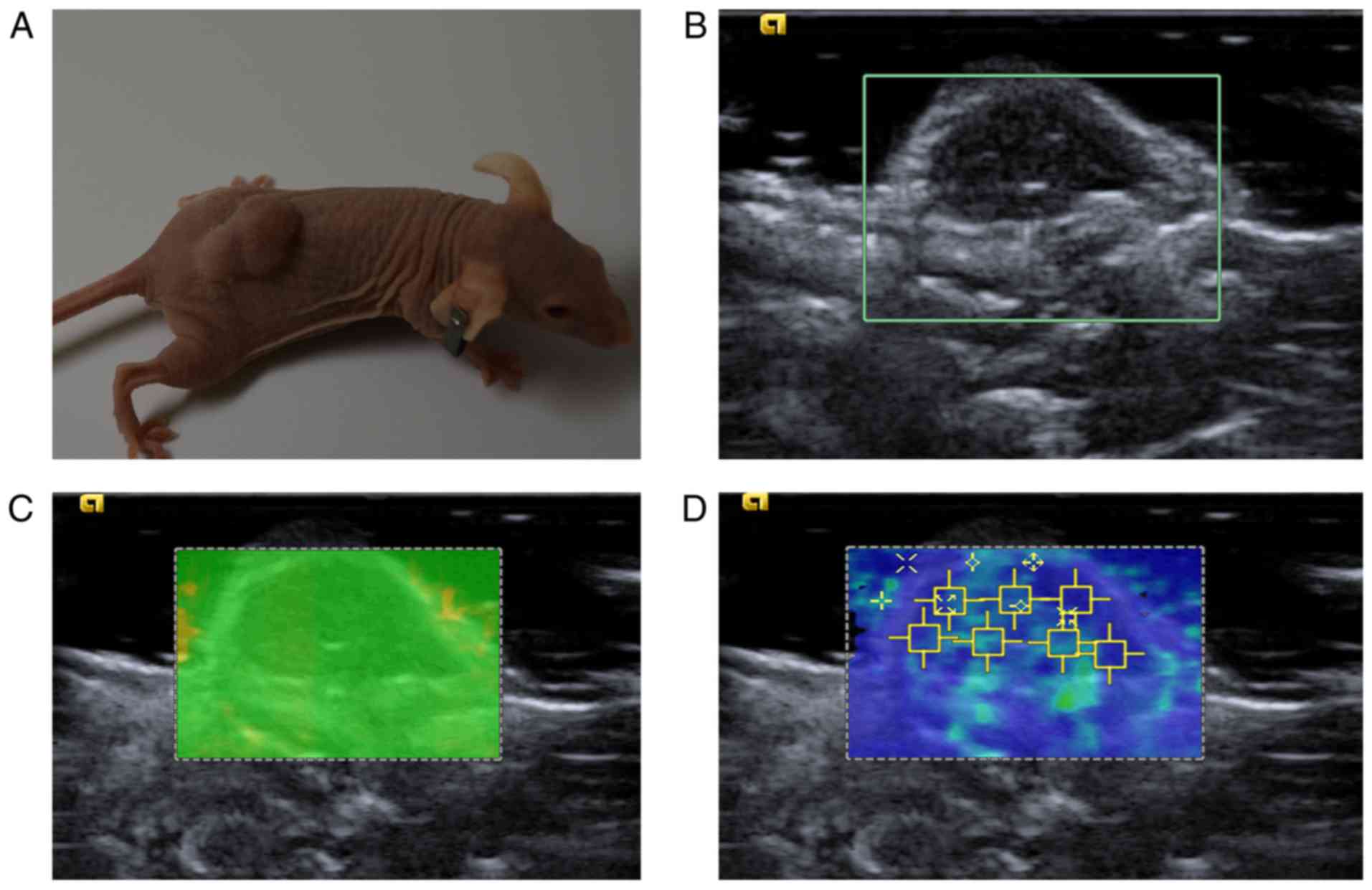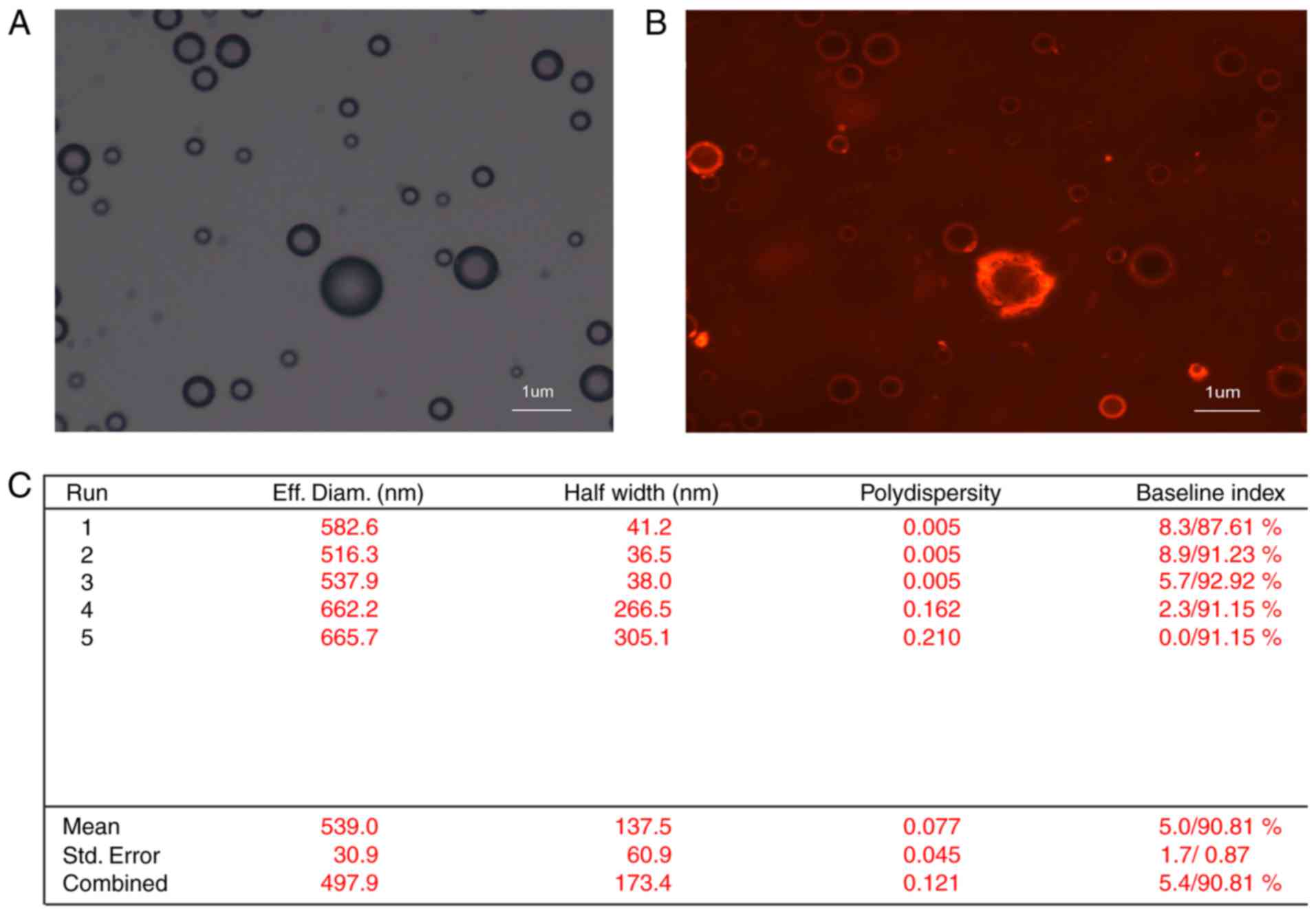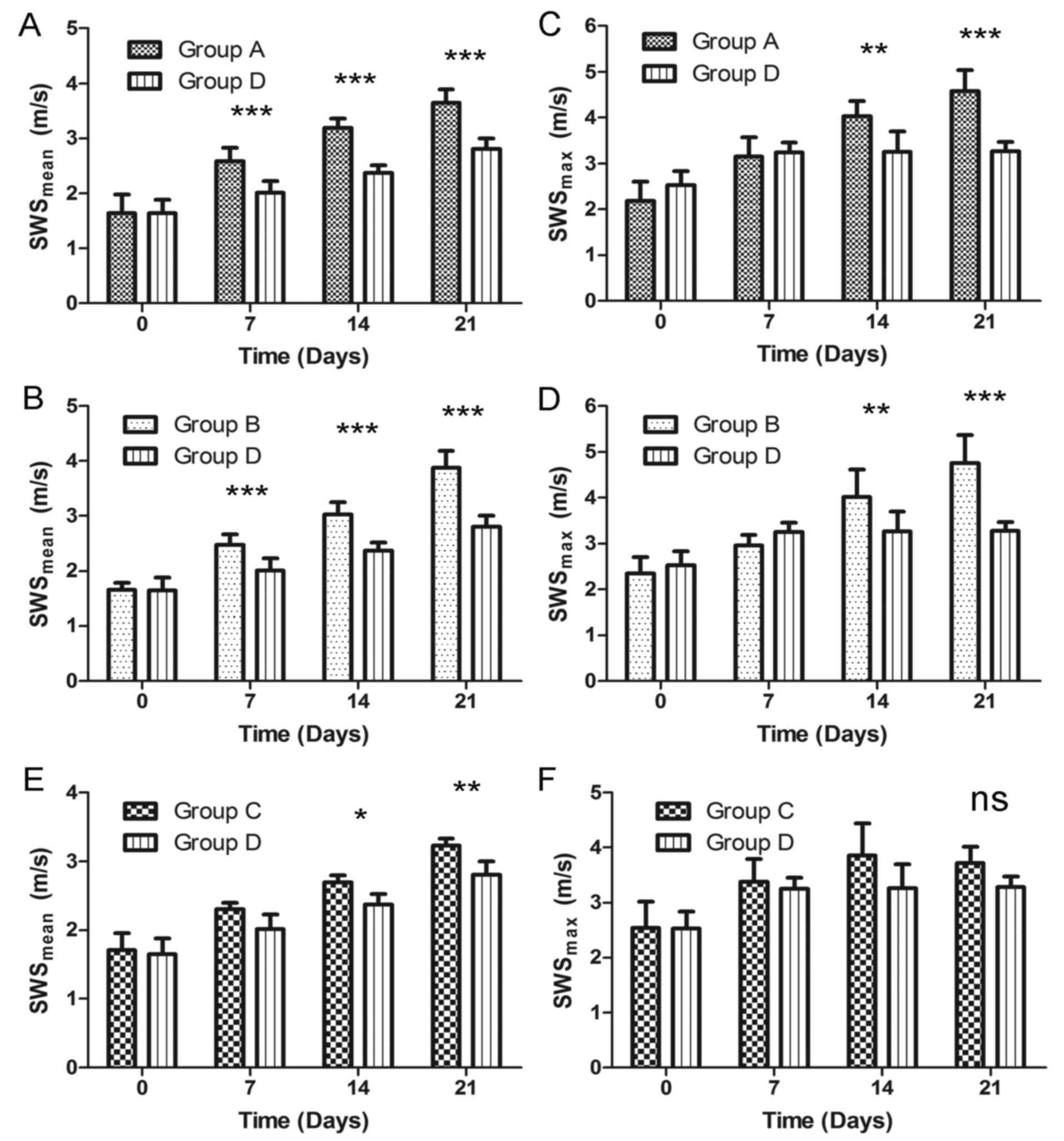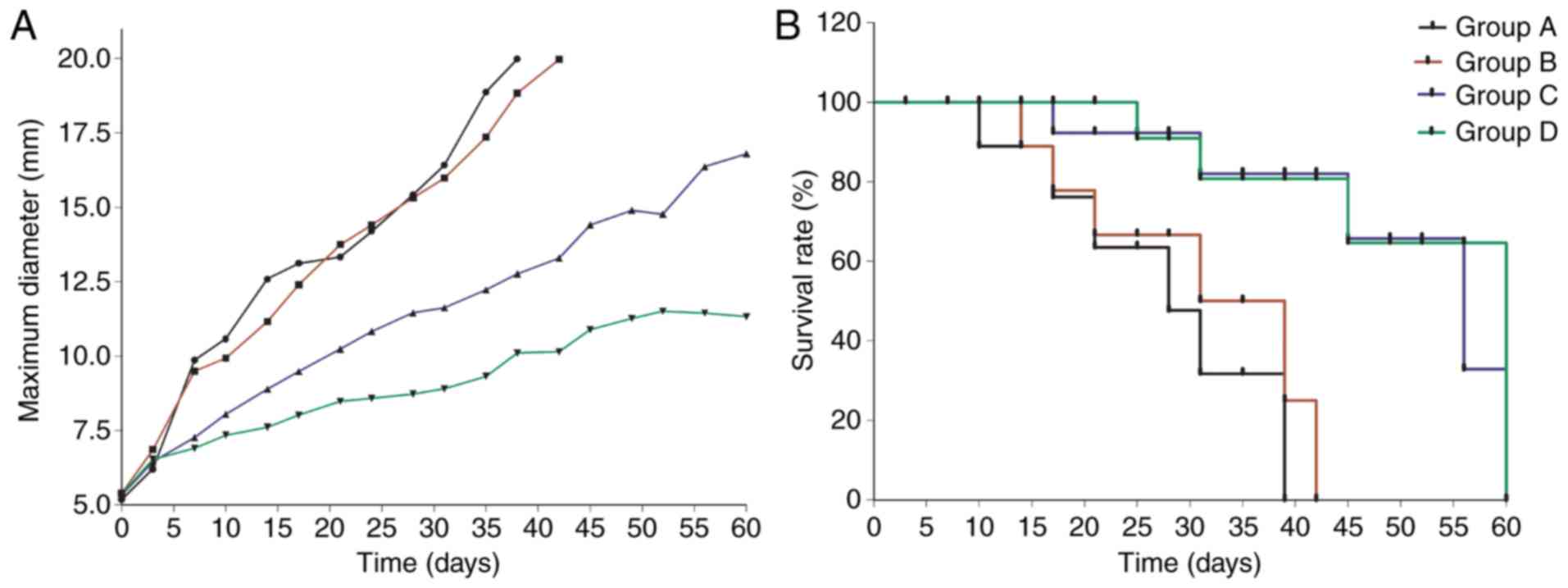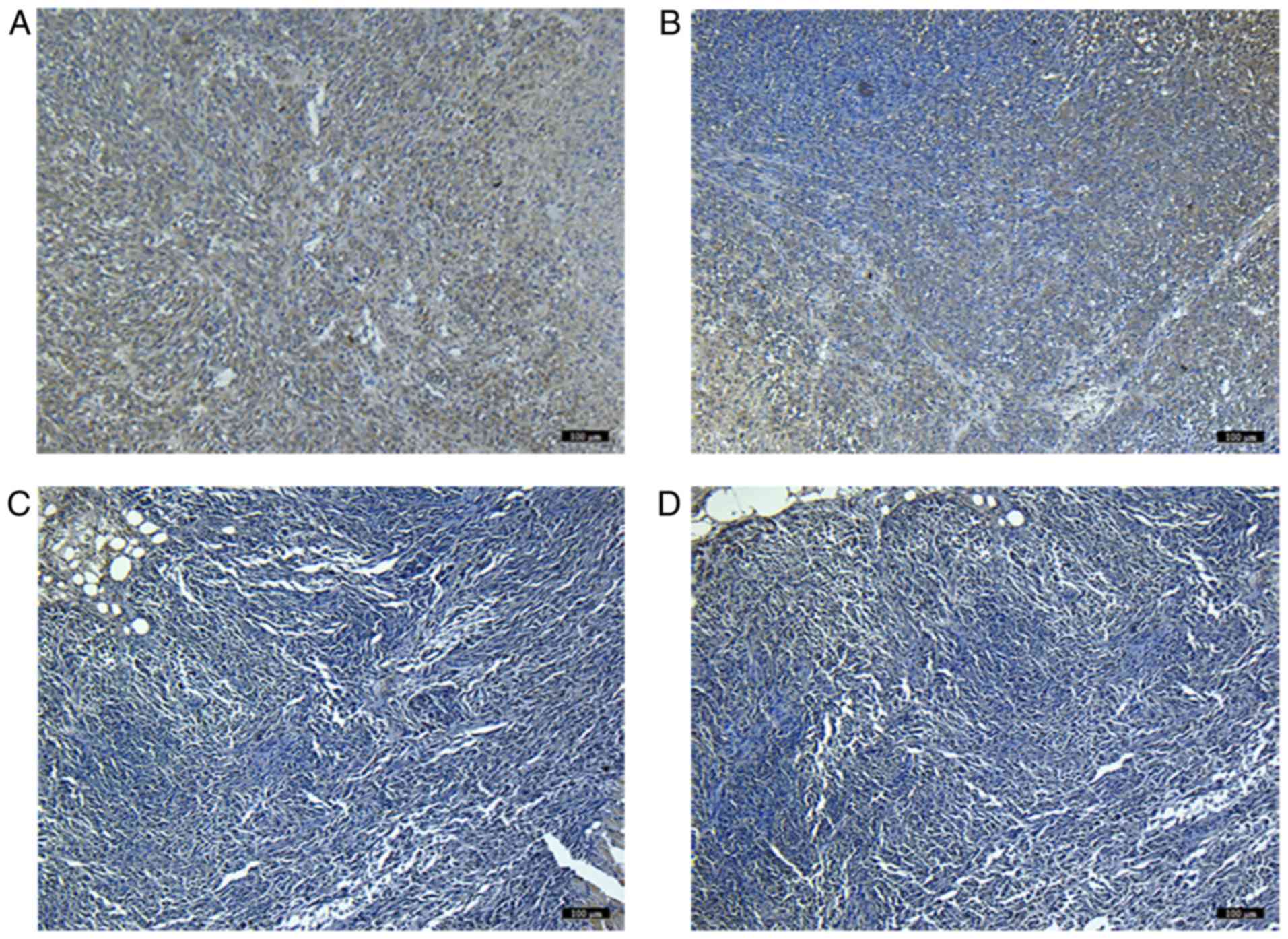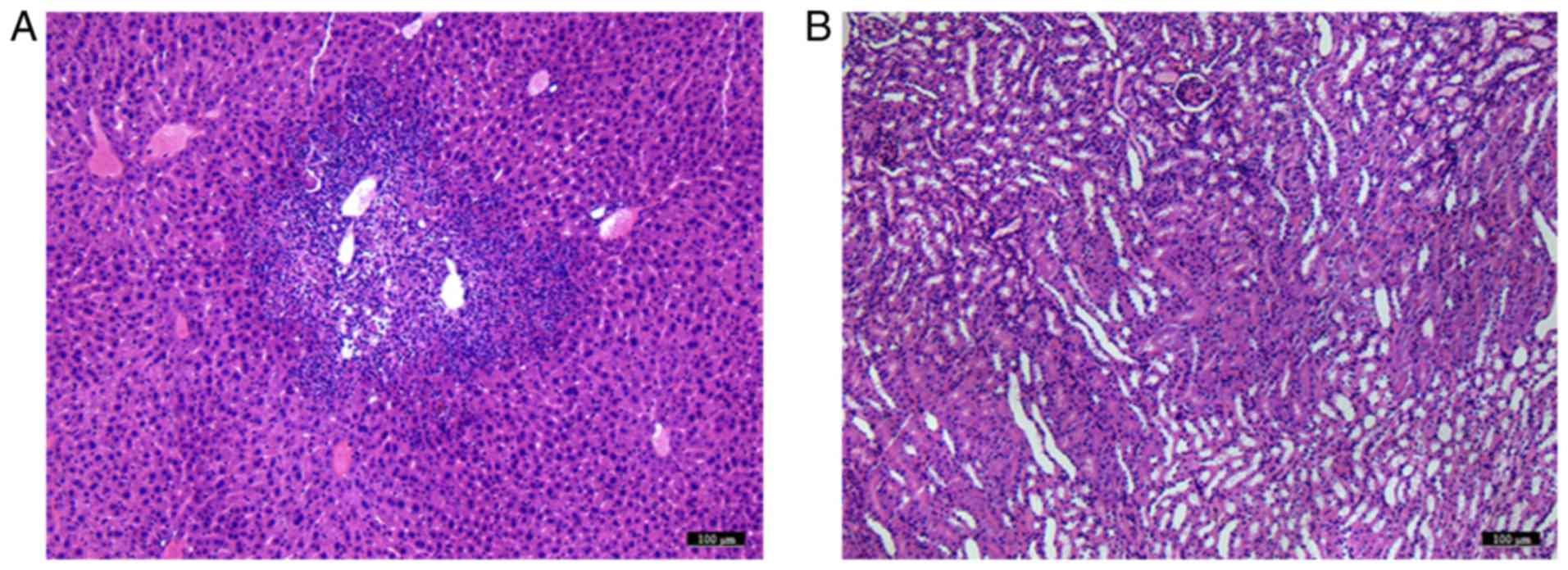|
1
|
Yao MH, Wu R, Xu G, Zhao LX, Liu H, Pu H
and Fang Y: A novel two-dimensional quantitative shear wave
elastography to make differential diagnosis of breast lesions:
Comprehensive evaluation and influencing factors. Clin Hemorheol
Microcirc. 64:223–233. 2016. View
Article : Google Scholar : PubMed/NCBI
|
|
2
|
Özkan MB, Bilgici MC, Eren E, Caltepe G,
Yilmaz G, Kara C and Gun S: Role of point shear wave elastography
in the determination of the severity of fibrosis in pediatric liver
diseases with pathologic correlations. J Ultrasound Med.
36:2337–2344. 2017. View Article : Google Scholar : PubMed/NCBI
|
|
3
|
Tozaki M, Saito M, Benson J, Fan L and
Isobe S: Shear wave velocity measurements for differential
diagnosis of solid breast masses: A comparison between virtual
touch quantification and virtual touch IQ. Ultrasound Med Biol.
39:2233–2245. 2013. View Article : Google Scholar : PubMed/NCBI
|
|
4
|
Ianculescu V, Ciolovan LM, Dunant A, Vielh
P, Mazouni C, Delaloge S, Dromain C, Blidaru A and Balleyguier C:
Added value of virtual touch IQ shear wave elastography in the
ultrasound assessment of breast lesions. Eur J Radiol. 83:773–777.
2014. View Article : Google Scholar : PubMed/NCBI
|
|
5
|
Ben Z, Gao S, Wu W, Chen S, Fu S, Zhang J
and Chen Y: Clinical value of the VTIQ technology in the
differential diagnosis of superficially enlarged lymph nodes. Acta
Radiol. 59:836–844. 2018. View Article : Google Scholar : PubMed/NCBI
|
|
6
|
Yeh CC, Horng HC and Wang PH: Acoustic
radiation force imaging (ARFI): A new powerful tool of ultrasound.
J Chin Med Assoc. 80:681–682. 2017. View Article : Google Scholar : PubMed/NCBI
|
|
7
|
Zhang Y, Luo L and Luo Q: Identification
of benign and malignant endometrial cancer with transvaginal
ultrasonography combined with elastography and tissue hardness
analysis. J Biol Regul Homeost Agents. 29:905–912. 2015.PubMed/NCBI
|
|
8
|
Seguin J, Mignet N, Ossa Latorre H, Tanter
M and Gennisson JL: Evaluation of antivascular combretastatin A4 P
efficacy using supersonic shear imaging technique of ectopic colon
carcinoma CT26. Ultrasound Med Biol. 43:2352–2361. 2017. View Article : Google Scholar : PubMed/NCBI
|
|
9
|
Torre LA, Bray F, Siegel RL, Ferlay J,
Lortet-Tieulent J and Jemal A: Global cancer statistics, 2012. CA
Cancer J Clin. 65:87–108. 2015. View Article : Google Scholar : PubMed/NCBI
|
|
10
|
Sherman M: Hepatocellular carcinoma:
Epidemiology, surveillance, and diagnosis. Semin Liver Dis.
30:3–16. 2010. View Article : Google Scholar : PubMed/NCBI
|
|
11
|
Le Grazie M, Biagini MR, Tarocchi M,
Polvani S and Galli A: Chemotherapy for hepatocellular carcinoma:
The present and the future. World J Hepatol. 9:907–920. 2017.
View Article : Google Scholar : PubMed/NCBI
|
|
12
|
van't Veer LJ and Bernards R: Enabling
personalized cancer medicine through analysis of gene-expression
patterns. Nature. 452:564–570. 2008. View Article : Google Scholar : PubMed/NCBI
|
|
13
|
Xue Y, Yang G, Wang C, Li X and Du G:
Effects of shRNA-mediated SOX9 inhibition on cell proliferation and
apoptosis in human HCC cell line Hep3B mediated by
ultrasound-targeted microbubble destruction (UTMD). Cell Biochem
Biophys. 73:553–558. 2015. View Article : Google Scholar : PubMed/NCBI
|
|
14
|
Avila MA, Berasain C, Sangro B and Prieto
J: New therapies for hepatocellular carcinoma. Oncogene.
25:3866–3884. 2006. View Article : Google Scholar : PubMed/NCBI
|
|
15
|
Gomes-da-Silva LC, Fonseca NA, Moura V, de
Lima Pedroso MC, Simões S and Moreira JN: Lipid-based nanoparticles
for siRNA delivery in cancer therapy: Paradigms and challenges. Acc
Chem Res. 45:1163–1171. 2012. View Article : Google Scholar : PubMed/NCBI
|
|
16
|
Wu YY, Chen L, Wang GL, Zhang YX, Zhou JM,
He S, Qin J and Zhu YY: Inhibition of hepatocellular carcinoma
growth and angiogenesis by dual silencing of NET-1 and VEGF. J Mol
Histol. 44:433–445. 2013. View Article : Google Scholar : PubMed/NCBI
|
|
17
|
Wang GL, Chen L, Wei YZ, Zhou JM, Wu YY,
Zhang YX, Qin J and Zhu YY: The effect of NET-1 on the
proliferation, migration and endocytosis of the SMMC-7721 HCC cell
line. Oncol Rep. 27:1944–1952. 2012.PubMed/NCBI
|
|
18
|
Qiu DM, Wang GL, Chen L, Xu YY, He S, Cao
XL, Qin J, Zhou JM, Zhang YX and E Q: The expression of beclin-1,
an autophagic gene, in hepatocellular carcinoma associated with
clinical pathological and prognostic significance. BMC Cancer.
14:3272014. View Article : Google Scholar : PubMed/NCBI
|
|
19
|
Ye K, Wang Z, Zhang G and Liang S:
Prognostic significance of neuroepithelial transforming protein 1
in hepatocellular carcinoma. J Invest Surg. 23:163–169. 2010.
View Article : Google Scholar : PubMed/NCBI
|
|
20
|
Chen L, Wang Z, Zhan X, Li DC, Zhu YY and
Zhu J: Association of NET-1 gene expression with human
hepatocellular carcinoma. Int J Surg Pathol. 15:346–353. 2007.
View Article : Google Scholar : PubMed/NCBI
|
|
21
|
Li T, Xue Y, Wang G, Gu T, Li Y, Zhu YY
and Chen L: Multi-target siRNA: Therapeutic strategy for
hepatocellular carcinoma. J Cancer. 7:1317–1327. 2016. View Article : Google Scholar : PubMed/NCBI
|
|
22
|
Han X, Cheng W, Jing H, Zhang JW and Tang
LL: Neuroepithelial transforming protein 1 short interfering
RNA-mediated gene silencing with microbubble and ultrasound
exposure inhibits the proliferation of hepatic carcinoma cells in
vitro. J Ultrasound Med. 31:853–861. 2012. View Article : Google Scholar : PubMed/NCBI
|
|
23
|
He S, Wei YZ, Wang GL, Xu YY, Zhou JM,
Zhang YX and Chen L: Study of RNA interference targeting NET-1
combination with sorafenib for hepatocellular carcinoma therapy in
vitro and in vivo. Gastroenterol Res Pract. 2013:6851502013.
View Article : Google Scholar : PubMed/NCBI
|
|
24
|
Tsuchiya N, Sawada Y, Endo I, Saito K,
Uemura Y and Nakatsura T: Biomarkers for the early diagnosis of
hepatocellular carcinoma. World J Gastroenterol. 21:10573–10583.
2015. View Article : Google Scholar : PubMed/NCBI
|
|
25
|
Jing JS, Ye W, Jiang YK, Ma J, Zhu MQ, Ma
JM, Zhou H, Yu LQ, Yang YF and Wang SC: The value of GPC3 and GP73
in clinical diagnosis of hepatocellular carcinoma. Clin Lab.
63:1903–1909. 2017. View Article : Google Scholar : PubMed/NCBI
|
|
26
|
Montalbano M, Rastellini C, McGuire JT,
Prajapati J, Shirafkan A, Vento R and Cicalese L: Role of
Glypican-3 in the growth, migration and invasion of primary
hepatocytes isolated from patients with hepatocellular carcinoma.
Cell Oncol. 41:169–184. 2018. View Article : Google Scholar
|
|
27
|
Tsuchiya N, Yoshikawa T, Fujinami N, Saito
K, Mizuno S, Sawada Y, Endo I and Nakatsura T: Immunological
efficacy of glypican-3 peptide vaccine in patients with advanced
hepatocellular carcinoma. Oncoimmunology. 6:e13467642017.
View Article : Google Scholar : PubMed/NCBI
|
|
28
|
Chen JJ, Xie CM, Wang CR, Wan Y, Dong ZN,
Li M and Xu WW: Development of a time-resolved fluorescence
immunoassay for the diagnosis of hepatocellular carcinoma based on
the detection of glypican-3. J Fluoresc. 27:1479–1485. 2017.
View Article : Google Scholar : PubMed/NCBI
|
|
29
|
Li M, Zhang W, Wang B, Gao Y, Song Z and
Zheng QC: Ligand-based targeted therapy: A novel strategy for
hepatocellular carcinoma. Int J Nanomedicine. 11:5645–5669. 2016.
View Article : Google Scholar : PubMed/NCBI
|
|
30
|
Kievit FM and Zhang M: Cancer
nanotheranostics: Improving imaging and therapy by targeted
delivery across biological barriers. Adv Mater. 23:H217–H247. 2011.
View Article : Google Scholar : PubMed/NCBI
|
|
31
|
Yang J, Hendricks W, Liu G, McCaffery JM,
Kinzler KW, Huso DL, Vogelstein B and Zhou S: A nanoparticle
formulation that selectively transfects metastatic tumors in mice.
Proc Natl Acad Sci USA. 110:14717–14722. 2013. View Article : Google Scholar : PubMed/NCBI
|
|
32
|
Eggen S, Fagerland SM, Mørch Ý, Hansen R,
Søvik K, Berg S, Furu H, Bøhn AD, Lilledahl MB, Angelsen A, et al:
Ultrasound-enhanced drug delivery in prostate cancer xenografts by
nanoparticles stabilizing microbubbles. J Control Release.
187:39–49. 2014. View Article : Google Scholar : PubMed/NCBI
|
|
33
|
Juffermans LJ, Meijering BD, Henning RH
and Deelman LE: Ultrasound and microbubble-targeted delivery of
small interfering RNA into primary endothelial cells is more
effective than delivery of plasmid DNA. Ultrasound Med Biol.
40:532–540. 2014. View Article : Google Scholar : PubMed/NCBI
|
|
34
|
Meng M, Gao J, Wu C, Zhou X, Zang X, Lin
X, Liu H, Wang C, Su H, Liu K, et al: Doxorubicin nanobubble for
combining ultrasonography and targeted chemotherapy of rabbit with
VX2 liver tumor. Tumour Biol. 37:8673–8680. 2016. View Article : Google Scholar : PubMed/NCBI
|
|
35
|
Wu B, Qiao Q, Han X, Jing H, Zhang H,
Liang H and Cheng W: Targeted nanobubbles in low-frequency
ultrasound-mediated gene transfection and growth inhibition of
hepatocellular carcinoma cells. Tumour Biol. 37:12113–12121. 2016.
View Article : Google Scholar : PubMed/NCBI
|
|
36
|
Yang YP, Xu XH, Bo XW, Liu BJ, Guo LH, Xu
JM, Sun LP and Xu HX: Comparison of virtual touch tissue imaging
& quantification (VTIQ) and virtual touch tissue quantification
(VTQ) for diagnosis of thyroid nodules. Clin Hemorheol Microcirc.
65:137–149. 2017. View Article : Google Scholar : PubMed/NCBI
|
|
37
|
He YP and Xu HX, Li XL, Li DD, Bo XW, Zhao
CK, Liu BJ, Wang D and Xu HX: Comparison of virtual touch tissue
imaging & quantification (VTIQ) and Toshiba shear wave
elastography (T-SWE) in diagnosis of thyroid nodules: Initial
experience. Clin Hemorheol Microc. 66:15–26. 2017. View Article : Google Scholar
|
|
38
|
Park DH, Jung BK, Lee YS, Jang JY, Kim MK,
Lee JK, Park H, Seo J and Kim CW: Evaluation of in vivo antitumor
effects of ANT2 shRNA delivered using PEI and ultrasound with
microbubbles. Gene Ther. 22:325–332. 2015. View Article : Google Scholar : PubMed/NCBI
|
|
39
|
Lucero HA, Patterson S, Matsuura S and
Ravid K: Quantitative histological image analyses of reticulin
fibers in a myelofibrotic mouse. J Biol Methods. 3:e602016.
View Article : Google Scholar : PubMed/NCBI
|
|
40
|
Peng H, Birkett GR and Nguyen AV: Progress
on the surface nanobubble story: What is in the bubble? Why does it
exist? Adv Colloid Interface Sci. 222:573–580. 2015. View Article : Google Scholar : PubMed/NCBI
|
|
41
|
Kapetas P, Pinker-Domenig K, Woitek R,
Clauser P, Bernathova M, Spick C, Helbich T and Baltzer PA:
Clinical application of acoustic radiation force impulse imaging
with Virtual Touch IQ in breast ultrasound: Diagnostic performance
and reproducibility of a new technique. Acta Radiol. 58:140–147.
2017. View Article : Google Scholar : PubMed/NCBI
|
|
42
|
Chamming's F, Latorre-Ossa H, Le
Frère-Belda MA, Fitoussi V, Quibel T, Assayag F, Marangoni E,
Autret G, Balvay D, Pidial L, et al: Shear wave elastography of
tumour growth in a human breast cancer model with pathological
correlation. Eur Radiol. 23:2079–2086. 2013. View Article : Google Scholar : PubMed/NCBI
|
|
43
|
Li J, Wu Y, Schimmel N, Al-Ameen MA and
Ghosh G: Breast cancer cells mechanosensing in engineered matrices:
Correlation with aggressive phenotype. J Mech Behav Biomed Mater.
61:208–220. 2016. View Article : Google Scholar : PubMed/NCBI
|
|
44
|
Zhou H, Zhou XL, Xu HX, Li DD, Liu BJ,
Zhang YF, Xu JM, Bo XW, Li XL, Guo LH and Qu S: Virtual touch
tissue imaging and quantification in the evaluation of thyroid
nodules. J Ultrasound Med. 36:251–260. 2017. View Article : Google Scholar : PubMed/NCBI
|
|
45
|
Chamming's F, Le-Frère-Belda MA,
Latorre-Ossa H, Fitoussi V, Redheuil A, Assayag F, Pidial L,
Gennisson JL, Tanter M, Cuénod CA and Fournier LS: Supersonic shear
wave elastography of response to anti-cancer therapy in a xenograft
tumor model. Ultrasound Med Biol. 42:924–930. 2016. View Article : Google Scholar : PubMed/NCBI
|
|
46
|
Kasai Y, Moriyasu F, Saito K, Hara T,
Kobayashi Y, Nakamura I and Sugimoto K: Value of shear wave
elastography for predicting hepatocellular carcinoma and
esophagogastric varices in patients with chronic liver disease. J
Med Ultrason. 42:349–355. 2015. View Article : Google Scholar
|
|
47
|
Sun CY, Lei KR, Liu BJ, Bo XW, Li XL, He
YP, Wang D, Ren WW, Zhao CK and Xu HX: Virtual touch tissue imaging
and quantification (VTIQ) in the evaluation of thyroid nodules: The
associated factors leading to misdiagnosis. Sci Rep. 7:419582017.
View Article : Google Scholar : PubMed/NCBI
|
|
48
|
Ji ZJ, Wang JL and Chen L: Inhibition of
skin squamous cell carcinoma proliferation and promote apoptosis by
dual silencing of NET-1 and survivin. Oncol Rep. 34:811–822. 2015.
View Article : Google Scholar : PubMed/NCBI
|
|
49
|
Chen ZY, Liang K, Lin Y and Yang F: Study
of the UTMD-based delivery system to induce cervical cancer cell
apoptosis and inhibit proliferation with shRNA targeting Survivin.
Int J Mol Sci. 14:1763–1777. 2013. View Article : Google Scholar : PubMed/NCBI
|
|
50
|
Lee H, Lytton-Jean AK, Chen Y, Love KT,
Park AI, Karagiannis ED, Sehgal A, Querbes W, Zurenko CS, Jayaraman
M, et al: Molecularly self-assembled nucleic acid nanoparticles for
targeted in vivo siRNA delivery. Nat Nanotechnol. 7:389–393. 2012.
View Article : Google Scholar : PubMed/NCBI
|
|
51
|
Xu B, Yao M, Gu W, Yan M, Liu L and Zhang
J: Establishment and biological characteristics of mouse models
mimicking postoperative human carcinoma metastasis. Nan Fang Yi Ke
Da Xue Xue Bao. 27:1009–1011. 2007.(In Chinese). PubMed/NCBI
|
|
52
|
Elyas E, Papaevangelou E, Alles EJ, Erler
JT, Cox TR, Robinson SP and Bamber JC: Correlation of ultrasound
shear wave elastography with pathological analysis in a xenografic
tumour model. Sci Rep. 7:1652017. View Article : Google Scholar : PubMed/NCBI
|
|
53
|
von Ardenne M: Differences in induction of
the cellular switch mechanism of blood microcirculation in various
organs and tissues of the human body. Z Alternsforsch. 40:357–368.
1985.(In German). PubMed/NCBI
|
















